
The Book
Temporal Anomalies in Time Travel Movies
presents
Temporal Anomalies Index 2012
As explained previously in Temporal Anomalies Classics, the useful and oft-linked index to the years of Examiner articles is no longer available. This is the fourth of a series of indexing articles, each expected to cover articles in series begun during a particular calendar year, 2009, 2010, and 2011 now having been covered. 2012 began with Watchmen, then Teenage Mutant Turtles III, 11 Minutes Ago, Butterfly Effect 2, S. Darko, La Jetée, Triangle, and Midnight in Paris.
This year again included several articles which were not time travel analyses but related to time travel movies in other ways.
As explained, this series of indices was started when it became temporarily impossible to maintain this web site and seemed advisable to provide links to early Examiner articles for ease of access. That in turn became problematic, and we have since determined instead to move all that material here to M. J. Young Net, and hopefully to support it by reader contributions through Patreon and other means.
Miscellany
We begin again with the miscellany, including another indexing article:
Watchmen
Gary Sturgess again wondered about the temporal elements in another film, the screen version of Watchmen, so he sent a copy. Although it is  the director's cut (we do our analyses from theatrical release versions as a rule), the minimal involvement of the temporal elements suggests that the impact of the additional "non-canonical" footage will have little impact on what we know. It is again a story in which information travels from the future to the present, which opens several possibilities. The viewer is cautioned that the film earns its "R" rating with more than just foul language and comic book violence. It is based on a famous graphic novel, in this case of comic book superheroes, but is not for children.
the director's cut (we do our analyses from theatrical release versions as a rule), the minimal involvement of the temporal elements suggests that the impact of the additional "non-canonical" footage will have little impact on what we know. It is again a story in which information travels from the future to the present, which opens several possibilities. The viewer is cautioned that the film earns its "R" rating with more than just foul language and comic book violence. It is based on a famous graphic novel, in this case of comic book superheroes, but is not for children.
-
Possibilities: a quick overview of the relevant aspects of the film shows hints of both fixed time and parallel dimension theory, leading to confusion at the outset.
-
Consciousness: the mind of the critical character is considered, seeking an explanation for how he can not know in the present what he knows he will know in the future.
-
Evolution: the question is addressed as to whether such a consciousness would be a possible trait in evolutionary terms, that is, whether it could come into existence as it appears to work in the film and whether it would become part of the racial genome.
-
Parallels: the mention of parallel universes is explored, with reference to possible meanings, seeking one that fits the skill as we see it.
-
Unrealities: completes the consideration of possible meanings of the reference to parallel universes, considering the absurdity expressed by Schroedinger's Cat, and the impossibility of such a world.
-
Self-fulfilling: considers the predestination paradoxes that appear sometimes in Jon's seemingly self-fulfilling predictions.
Although on the surface the film seems to suggest concepts from Next or Minority Report or Frequency, it is something else again, but not something that appears to fit our reality.
Teenage Mutant Ninja Turtles III
They were very popular for a while, and managed to become the stars of three feature films, leaping from the indie comic book pages to television to the silver screen as only ninjas could do. In the third film of the trilogy, Teenage Mutant Ninja Turtles III, often monikered Turtles in Time (but not, it seems, on the DVD release), they traveled to feudal Japan and won a war for the people against the daimyo. Not only do they tamper with history, though; they use a time travel device which requires communication with the future, complicating matters greatly. Our analysis thus deals with five time trips, each of which is both a trip to the past and a trip to the future.
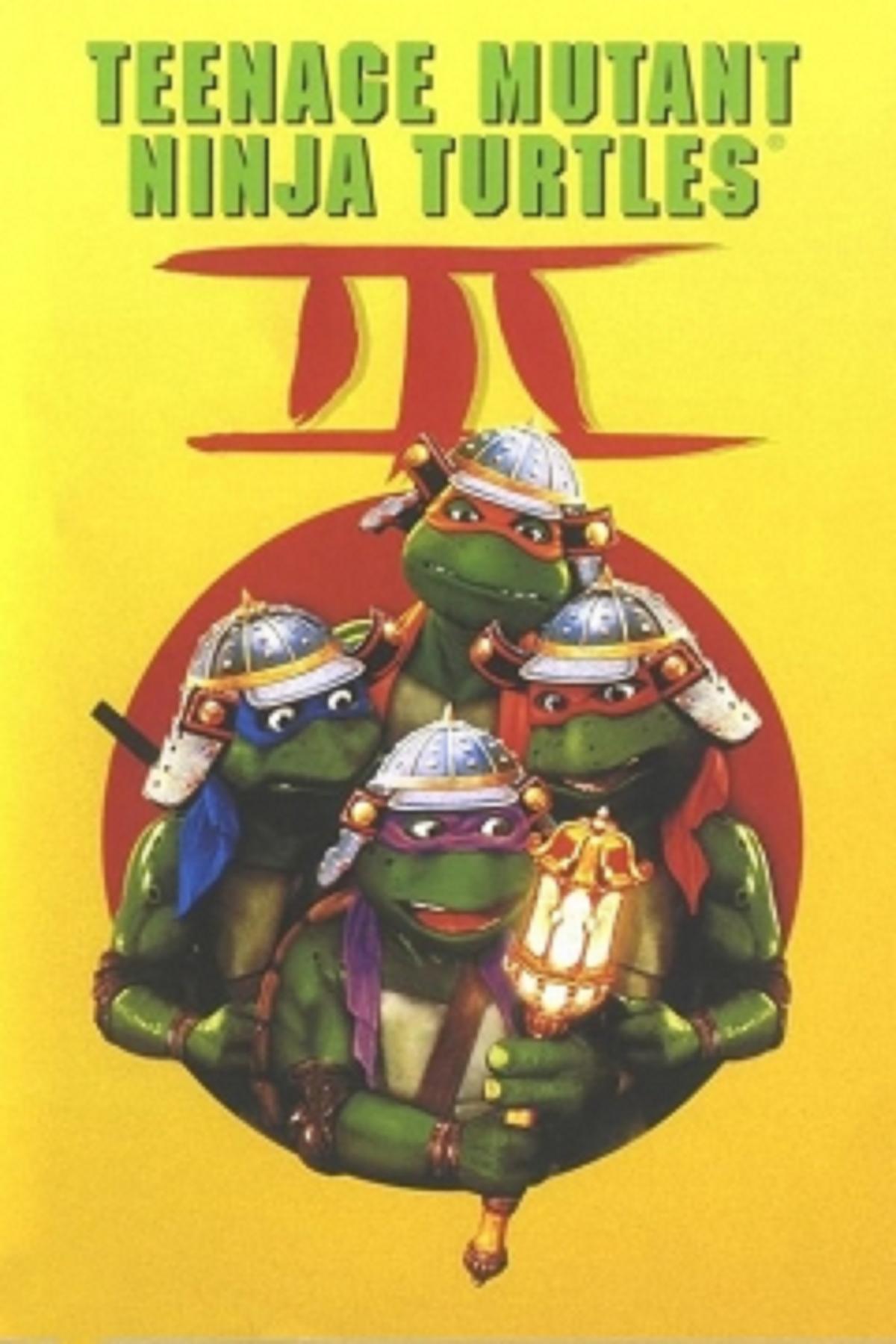
-
Turtles in Time: provides an introductory overview to the events.
-
Dimension Hopping: considers whether the film could be resolved under some version of multiple dimension theory, and what that would mean to the story.
-
Sequencing: attempts to resolve the issue of which trip is the first trip, and how the fact that the last departure becomes the first arrival impacts our analysis.
-
1400: examines the original history of the time prior to the events of the movie.
-
Verona: looks at the Romeo and Juliet story in the original history of the time we actually see the Turtles visit.
-
April: considers the impact of the trip that is first in terms of the temporal moment of departure.
-
Turtles: looks at what happens when the Turtles themselves make their rescue trip.
-
Michelangelo: examines the problems of the return trip, and the special problem of the fact that one of the Turtles missed the ride and has to wait for the next one.
-
Replay: returns to the issues involved in the question of whether the last departure and first arrival occur before or after all the others are resolved.
-
Disaster: suggests a resolution to the story that works within the context of what we see on the screen but spells disaster for the world we never see.
-
Vanishing: considers the alternative, that travelers from the past vanish at the moment of their departure and wait for the future to arrive, rather than living and dying in the past and then having that history altered by a traveler from the future.
Although it is not usually remembered, the Turtles themselves were the last major work of Jim Henson, who made the animatronic muppets work in the first movie of the series shortly before his untimely death. It was a wonderful accomplishment to crown his life's work.
11 Minutes Ago
A rare gem of a time travel story, well crafted, and recommended by reader Jim Shaarda,
11 Minutes Ago is well worth watching. It is also challenging to analyze, and I must thank Kyler Young for being a sounding board on this and helping me work out the card trick problem.
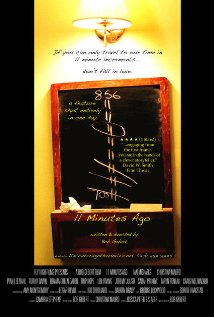
-
Three Stories: gives a brief overview of the film and the problem it sets.
-
Failure: provides an explanation for why Pack made the second trip.
-
Return: discusses the second trip, and how it becomes its own cause.
-
Skip: touches on the problem of why his third arrival was early, and how that impacts the rest of the story.
-
Missed: considers why he returns for the time he missed.
-
Tumbling: examines what we know about the time travel device, and how it must work in order for the story to resolve.
-
Earlier: begins tackling the issues involved in the first half of the party and the skip to the 7:15 arrival.
-
Choppy: considers how the first half of the night must have been constructed from multiple time trips.
-
Spoilers: is the first look at the last trip.
-
Cards: explains the complications created by the predestination paradox that is inherent in the card trick.
-
Chance: resolves the card trick problem, recognizing that it was a very risky idea.
-
Future: gives an overview of the potential problems ahead for Pack and Cynthia and indeed the entire universe.
The film was made in a single day, and it is fascinating to watch so much of it playing out in the end.
The Butterfly Effect 2
Not long after analyzing The Butterfly Effect, I became aware that there was a sequel entitled The Butterfly Effect 3--because I saw it listed as airing on late night cable, and recorded it. However, since this was not on the order of a Naked Gun movie, the fact that there was a third suggested that there must have been a second, so I did not watch the third lest it rely on the second. Finally, as I was looking for a different movie which seemed to have vanished from shelves at the local retailer, I stumbled on a copy of this one, and desperate for a time travel movie to analyze for this series I bought it. It turned out to be more enjoyable than I had anticipated, although nearly everything bad that was said about the first movie seems to have been preserved in the second. In any case, here is the analysis:
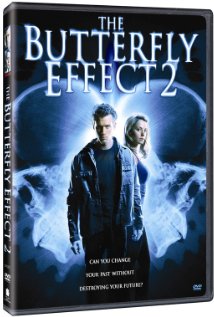
-
A Sequel: presents the original history as it appears in the film.
-
Little Problems: looks at the first altered history, and the basic problems that plague the time travel elements of the series.
-
Imperfect Improvement: moves us from the first altered history to the second altered history with the visit to the Christmas party.
-
Pinning the Buttefly: recognizes a point on which chaos theory ought to have wreaked havoc on events and somehow did not do so.
-
Christmas Gifts: examines everything that goes wrong in the penultimate history.
-
Remarkable Memory: steps away from the time travel itself to a peculiar issue, that Nick appears to remember the future that has not yet happened, despite not remembering the past that has.
-
Double Trouble: recalls another problem from the first film, in that Nick replaces a version of himself he has already replaced, and so we must wonder what happens to the version of him who came from the other future to create this one.
-
Timing Flutters: catches the film in an awkward temporal continuity error, in that something that could not have been impacted by Nick's travels is happening sooner than it did in the original history.
-
Conclusions: wraps up what can be guessed about the final history of the world following the end of the story.
We have since turned our attention to the third of the series,
Butterfly Effect 3: Revelations.
S. Darko
If you can confuse enough people with a time travel element in a less-popular film, you can probably get them to come watch a sequel. That seems to be the theory which led to the release of S. Darko, a time travel story following the life of the younger sister of the titular Donnie Darko, whose life was filled with a objects, ghosts, and messages traveling from the future. Our analysis of that film was modestly favorable. Although this sequel repeats many of the tropes of the original, it does so in original ways that make it much more complicated. Thus we provide an analysis of Samantha's adventures in time travel.
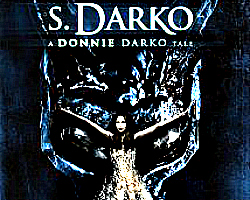
- The sequel: provides the necessary introductory background to the story.
- Unaltered: attempts to recreate the lost original history of events.
- Ragnorak: seeks to identify which "end of the world" is being predicted by Samantha's ghost.
- The book aside: addresses the problem of whether Roberta Sparrow's book, as published on the Internet, ought to be considered an authoritative explanation of events within the movie.
- Drawing on memories: discovers a serious problem with the sketch of the rabbit head Samantha inherited from Donnie.
- Change: considers the first anomaly and the first altered version of history.
- Telepathy: looks at how Corey prevents Sam's death by causing her own, and the problems that creates temporally.
- Timing chain: finds a complication in the movement of objects outside Corey's control when she changes the conversational timing of her discussion with Sam.
- Sam's ghost: finds a predestination paradox in the appearance of Sam's ghost because Sam dies twice.
- Haunting time: considers such problems with the ghosts as how they manage to travel to times before their own deaths.
- Vortices: looks at what the vortex does, and how that differs from the one in the original film.
- Incompatible deaths: explains why Corey cannot save Sam.
- Ghost rewrite: discusses issues in the history created by Samantha's ghost.
- First or last?: tries to figure out which ghost of Sam released which Iraq Jack when.
- Justin time: finds the final outcome of the last anomaly, as Jack rewrites history and removes himself from it.
In the end, it is a much more difficult and less satisfying movie than the original, although perhaps a bit less dark in its presented outcome, even though there is no clear path to reach that outcome.
La Jetée
Almost from the moment the analysis of 12 Monkeys appeared on the original Temporal Anomalies in Popular Time Travel Movies site, correspondents have been saying that this obscure French art film was a must-see predecessor which inspired that remarkable work. This work is not so remarkable, but La Jetée is a time travel film, and it has some points worth noting, although most of it has been pirated for more recent movies of one sort or another.
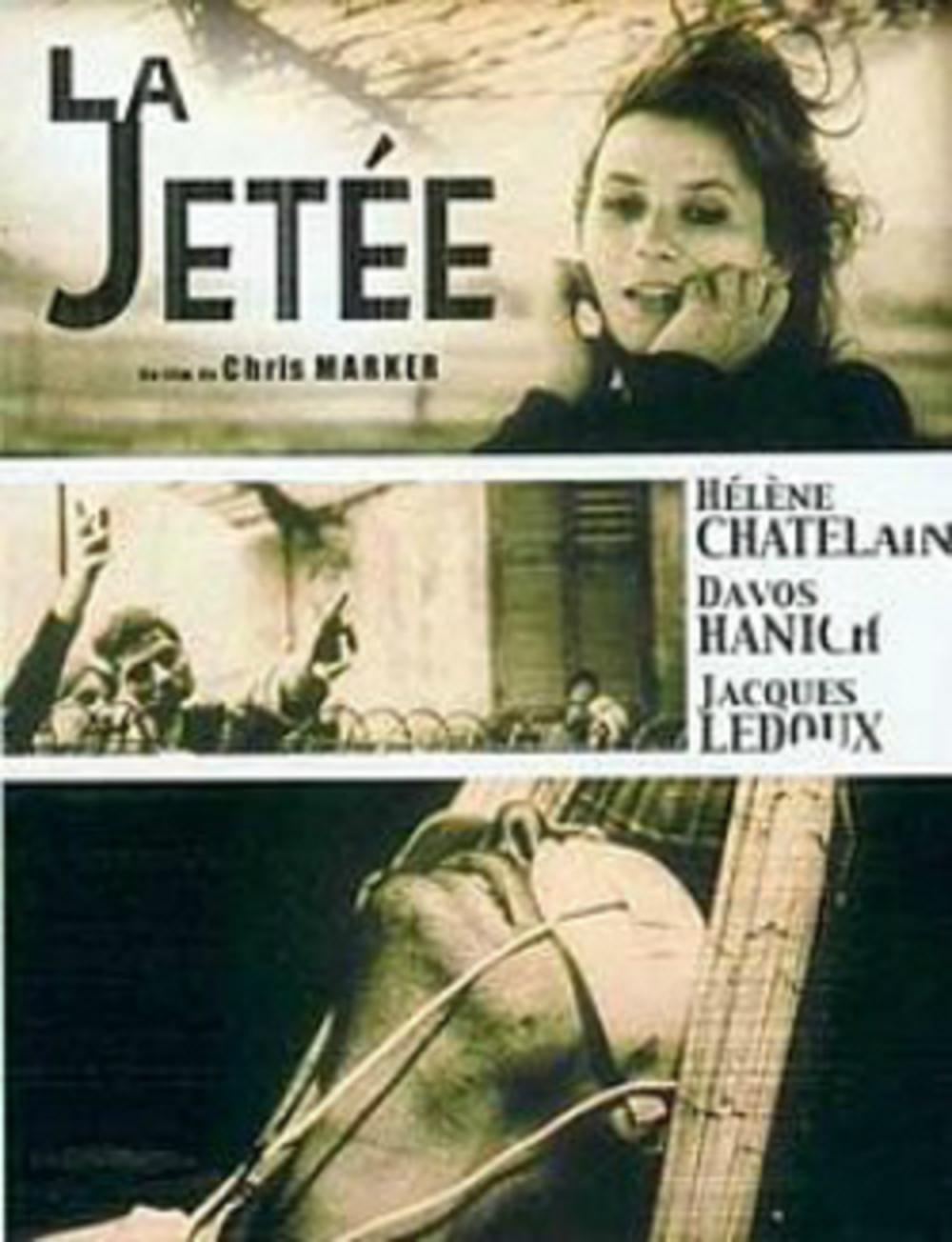
- Familiar: gives an overview of the story, spoiling the surprise that is not a surprise anyway.
- Method: faces questions concerning in what sense the traveler is in the past, and how that impacts the issues related to time travel.
- Predestination: finds a subtle but critical predestination paradox in the fact that the man was chosen because he saw himself appear in the past, and thus the cause of him being chosen is him having been chosen.
- Repeat: a single line in the film creates a serious problem for temporal analysis, as it appears the traveler may be replacing a previous version of himself in the past, and there does not seem to be a mechanism for this.
- Future: shows how the trip to the future becomes a serious problem because of the corresponding trip to the past.
- Banes: continues looking at the problems potentially caused by the trip from the future to the time traveler's own time, and in particular the gift he brings.
- Politics: tackles a different probably disastrous effect of bringing technology from the future, this time based on who receives it.
- Endings: wraps up the story with the several trips that interact with each other, and the problem of why they were made.
- Assassin: discovers a final problem in the interaction between the assassin's arrival and the solution to the predestination paradox.
- Fixed time: finds evidence within the film that it is not a fixed time story.
It is not a movie to rush out and watch; if you have seen it, the analysis might help you spot points you missed, but if you have not, you'll have a pretty thorough understanding of it once you've read the series.
Triangle
A slasher-style horror film with a time travel angle, Triangle was mentioned by readers. Not being a fan of slasher films, I cannot say whether this one is any good as that; but as a time travel film, it is a horror.

- A horror: recognizes the fundamental problems of the film and considers what approaches to time might work.
- Unseen horror: attempts to recreate the original history, and finds a far worse story than the one we see.
- Why Jess?: defends the conclusion that Jess was the survivor in the original history.
- Key problem: tries to resolve why there is only one set of Jessie's keys aboard the ship, and how they got there if she does not have them when she boards.
- Watch the time: discovers a less obvious problem with the fact that Jessie's watch and the ballroom clock agree with each other on a time different from Greg's watch.
- Out of ammo: tries to make sense of the infinite availability of guns and ammo in a finite weapons locker, and other objects on the ship that appear to reset with each iteration, as against those which for some reason do not.
- Little mistakes: pursues the issues of what does and does not accumulate, with some surprising inconsistencies.
- Birds and pendants: looks at the discrepancy between the number of times she has hit the bird and the number of times she has fallen off the ship.
- Toward infinity: looks at the problem of accumulation against the fact that the loop will never end.
- Suicide: covers both the grandfather paradox and the infinite aging problem that happens when Jessie kills herself and replaces herself.
- Divergent dimensions: considers whether the flaw in divergent dimension theory might be the solution to some of the problems here.
- More mess: covers a few more of the problems in the film, and wraps up the analysis with a brief summary.
There are certainly better time travel movies out there. Even most of the bad ones make more sense than this.
Midnight in Paris
Woody Allen does time travel with Owen Wilson, and makes an interesting and enjoyable film with a clear point. Midnight in Paris takes us to some of the most famous moments in one of the most famous of cities, introducing us to some of its most famous people, so that its main character can learn something about living in the past.

- Opening spoilers: gives a basic overview of the story and most of the characters who pass through it.
-
Inconsequential: reconstructs his first trip to the past, and concludes that it probably did not have much risk of changing the future.
-
Transport: considers the problems created by a car picking up Gil and taking him to the past, and the possible resolutions of this incidental problem.
-
Nostalgia: looks at the potential damage caused by bringing the book back on his second trip.
-
Manuscript: takes a more in-depth look at the potential problems created by the manuscript being left in the past.
-
Zelda: considers the fact that Gil prevents the suicide of F. Scott Fitzgerald's wife Zelda, and seeks to understand the history of the world in which he was not there to do this.
-
Rhinoceri: faces the implications of Gil giving new ideas to the creative minds of the past, and the potential that their careers would take different directions impacting artistic expression in every field.
-
Africa: hits a serious snag, in that when Gil breaks Adriana's heart she lets Hemingway take her to Africa a decade too soon, which must have impacted Hemingway's writings thereafter.
-
Journal: looks at the remarkable coincidence of Gil finding Adriana's journal, and when she wrote what he read.
-
Versailles: covers the anomaly created by the detective's trip to a yet earlier era, and the significant object he takes with him.
-
Return: tries, unsuccessfully, to understand why sometimes people return to the future and other times they seem trapped in the past.
-
Valium™: considers the impact Gil has when he gives Zelda a modern medication, concluding that it is the impact on him more than on her that matters.
-
Ballet: considers the potential impact Adriana's work in 1890 would have, particularly on her own teacher Coco Chanel, and through that on herself.
-
Finalities: looks at the last remaining problems in the film, one of which is potentially fatal, and gives a final verdict on the story from a time travel perspective.
Apart from the time travel, this was one of Allen's more enjoyable movies, as long as you can get past the fact that Owen Wilson seems to be playing Woody Allen.
That completes the index through 2012; next time we will continue with articles published in 2013.



 the director's cut (we do our analyses from theatrical release versions as a rule), the minimal involvement of the temporal elements suggests that the impact of the additional "non-canonical" footage will have little impact on what we know. It is again a story in which information travels from the future to the present, which opens several possibilities. The viewer is cautioned that the film earns its "R" rating with more than just foul language and comic book violence. It is based on a famous graphic novel, in this case of comic book superheroes, but is not for children.
the director's cut (we do our analyses from theatrical release versions as a rule), the minimal involvement of the temporal elements suggests that the impact of the additional "non-canonical" footage will have little impact on what we know. It is again a story in which information travels from the future to the present, which opens several possibilities. The viewer is cautioned that the film earns its "R" rating with more than just foul language and comic book violence. It is based on a famous graphic novel, in this case of comic book superheroes, but is not for children.







